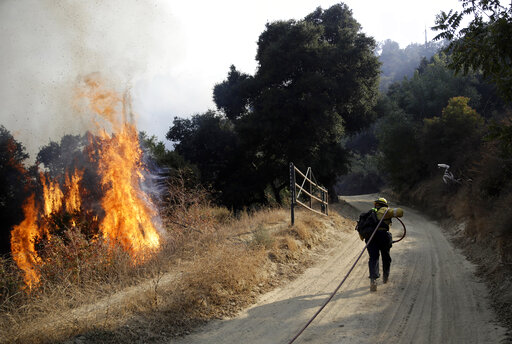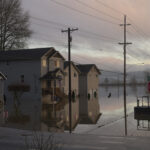Mother Nature has given a bit of a break to California during the 2019 wildfire season, but firefighters say the threat remains in force.
Only about 163,000 acres have burned this year, a fraction of the 632,000 or so scorched in the same period last year. A wet, snowy winter led to a widespread greening in the spring, signaling there would be plenty of tinder around after a hot, dry summer. But the landscape stayed relatively moist after clouds moored above the Sierra Nevadas in May slowed the snow melt.
With weather as an ally, firefighters were able to spend more time finding and containing hot spots before they spread. Meanwhile, PG&E Corp. has suggested its blackout of 2 million people this month may also have helped. After the cutoffs, the company said it found more than 100 instances of wind-driven equipment damage that could have caused fires.
“How we warm up and how we dry out are pretty important on how we set up the fire regime for the rest of the year,” said Mike Anderson, a state climatologist in Sacramento. “This year our heat didn’t show up until August. We actually caught a break.”
Two years of wildfires helped push PG&E, the state’s biggest utility owner, into bankruptcy after its equipment was identified as the cause of raging blazes that included the Camp Fire in November 2018 that killed 86 people and destroyed an entire town. This month, the company responded by cutting power to residents across northern and central California to make sure its equipment didn’t cause harm once again.
While that move has faced fierce criticism, PG&E crews inspecting more than 27,500 miles (44,257 kilometers) of power lines after the blackout found wind damage that included trees tangled with power lines and utility poles knocked to the ground, according to spokesman Jeff Smith.
“Had we not shut off power, this type of damage could have sparked a fire,” PG&E Chief Executive Officer Bill Johnson said in an opinion story in Thursday’s San Francisco Chronicle. “In fact, vegetation contacting lines was the very cause of a number of fires in the North Bay two years ago.”
Still, the consensus among forecasters and firefighters is that neither the state nor its utilities are out of the danger zone yet.
The wildfire season runs into winter, when about 90% of the state’s rain and snow descends. In the meantime, while the state’s bone-dry season was delayed, it wasn’t eliminated. Very low humidity levels combined with high winds rolling down mountain sides — the “Santa Ana” winds in Southern California, and the “Diablos” in the north — remain a threat for wildfires ahead.
Late season blazes can be very dangerous. In December 2017, for instance, the Thomas fire covered 281,893 acres in Ventura and Santa Barbara counties, destroying more than 1,000 structures.
“Everyone who is commenting on this year is doing so with their fingers crossed,” said Keith Gilless, dean emeritus of the U.C. Berkeley College of Natural Resources, in a telephone interview.
The concern now is focused on as many as 147 million dead trees still standing in California’s forests that were killed by a six-year drought earlier in the decade and a subsequent infestation of bark beetles, said Scott McLean, spokesman for the California Department of Forestry & Fire Protection, commonly called Cal Fire.
California this year had 400 extra seasonal firefighters to help tamp down spot fires and implement prescribed burns to limit the amount of tinder in key areas, according to McLean. “It’s hard to say what the rest of this year is going to bring,” he added. “We probably should see more fire activity into November at some point.”
Was this article valuable?
Here are more articles you may enjoy.


 Instacart to Pay $60 Million in FTC Consumer Protection Case
Instacart to Pay $60 Million in FTC Consumer Protection Case  Truckers Who Fail English Tests Get Pulled Off Roads in Trump Crackdown
Truckers Who Fail English Tests Get Pulled Off Roads in Trump Crackdown  Wells Fargo Sued by Ex-Manager Who Said Bank Faked Diversity
Wells Fargo Sued by Ex-Manager Who Said Bank Faked Diversity  Pacific Northwest Braces for Even More Flooding Rain This Week
Pacific Northwest Braces for Even More Flooding Rain This Week 